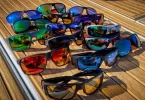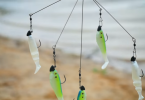Modern climbers utilize a wide range of strategies and tools to handle the difficulties of various types of terrain, which can occasionally amaze novices of the sport. All of these sports, from bouldering to rock climbing to ice climbing, need their practitioners to be trained in various skill sets and have their own specific equipment.
Climbers typically use either one of two general types while rope climbing on outdoor rock. These are referred to as lead climbing and sport climbing. Sport climbing is a type of lead climbing where the climber only needs fixed equipment to protect them from falling very far. Lead climbing , also terms as traditional climbing, includes portable equipment.
The main distinctions between sport climbing and lead climbing are listed below:
Sport Climbing vs. Lead Climbing
The primary distinction between the two main forms of climbing, lead climbing and sport climbing, is the method of safety a lead climber adopts to lessen the length and intensity of falls.
Sport climbing: Sport climbing is the practice of climbing a rock face using only one’s hands and feet. Sport paths, however, have the protection offered by bolts that have already been set in the rock.
Sports leaders use quickdraws, two carabiners connected by a short sling, to clip into these bolts as they pass. When the climber slips, he hits the last clipped bolt. Bolted anchors and other gear are typically used on sports climbing routes. This makes it simple for users to climb or descend without losing their gear or rope.
Lead climbing: In lead climbing, a leader inserts different kinds of gear into built-in ledges in the rock. Then, as they climb, they clip the rope. If they drop, their belayer locks the rope, and the climber’s equipment keeps them both attached to the cliff. Therefore, there is no risk of injury. Following this leader, the last climber takes off the equipment as they ascend, removing any traces of the group’s passage.
-
Gears
Sport Climbing: Sport climbing simplicity is one of its great attributes. We can concentrate more fully on the thrill of going over the rock since we aren’t worried about where to put our gear or what kind of gear to use.
This minimalism applies to domestic packing and racking up at the crag. A 70-meter rope and 15 quickdraws for protection may be used to send most sport climbing routes globally. You’re able to go once you have a personalized anchor system, a belay/rappel device, and whatever else you need to ascend and descend from a route.
Lead Climbing: Compare the sport climber’s compact gear to a team of large wall climbers with their collection of heavy equipment and a nest of cords and slings stretched out over a 24-square-foot tarp. However, not all lead climbs call for a 200-pound haul bag or a kilt of enormous cams.
But each lead climber must be ready for several unknowns. More equipment than in other sports is needed to ensure that you can handle whatever comes your way. Runners/slings, carabiners (4 locking carabiners), quickdraws, 6–7 mm cord, and a nut tool to help with gear removal make up the average beginner’s leading rack.
-
Techniques
Sport Climbing: Sport climbs may need similar maneuvers, although face climbing methods, including crimping and pinching handholds and edging and hooking on footholds, are more frequently used in sport climbing. Sport paths lean more vertical and overhung. This might stress a climber’s upper body and finger strength.
Lead Climbing: Lead climbing typically takes place in a low-angle to a vertical environment of cracks, pockets, knobs, and flakes. Climbers use various methods to scale these rock formations, including jamming (hands, feet, fingers, fists, toes, legs, and arms), chimneying, laybacking, smearing, and stemming.
-
Risk Levels
Sport Climbing: Sport climbing is frequently viewed as a less dangerous and demanding activity. Sport climbers typically don’t concern about a bolt coming loose or their protection failing in the case of a fall. With this security, a climber can climb on difficult routes and shrug off the penalties of making an error.
A sport route bolts should decrease the probability of a climber hitting an edge or other obstruction or falling to the ground. The toughest move on a route is also the easiest to guard, making a fall there negligible. A bolted route typically does not need hazardous breakaways or severe fall dangers.
Lead Climbing: Lead climbers must always be concerned with the stability of their gear placements. One of the toughest challenges for ambitious lead climbers is getting past this mind aspect.
A traditionalist subset praises and promotes dangerous activity in the lead climbing community. This contributes to climbing’s well-deserved reputation as a terrifying test of bravery. Long run outs on the exposed rock were hailed as daring.
That mindset may be required to succeed on the world’s most difficult lead climbing test pieces. That, however, is unusual. Most lead climbers try to set as much gear as possible to avoid serious falls and continue climbing the next day.
-
Impact on Environment
Sport Climbing: Sport climbing routes are created by semi-permanently changing the environment. Drilling holes in a rock face 4 inches deep and leaving metal expansion bolts there. It’s obvious that bolting and leaving fixed hardware behind have a greater and longer-lasting environmental impact than using traditional methods, offering a higher level of safety than natural pro. Shiny bolt lines and chains dangling from the cliff face can also be offensive to the eye.
Lead Climbing: Lead is the way to go if you want to climb in the most environmentally friendly manner possible. Additionally, drilling and bolting are prohibited in US-designated Wilderness areas; thus, this is the only option available.
-
Rock Type
The type of rock present at that site significantly impacts how climbers choose to ascend any given route. Lead climbing regions typically arise on rock formations with many fissures, pockets, flakes, horns, and knobs. Climbers use these features to add a sort of protection like slings, nuts, and cams.
Most of the world’s climbing communities feel natural gear should be used to secure routes rather than drilling holes for bolts. Given this, many climbing sites and crags are constructed primarily for either sport climbing or lead climbing. Without natural protection, climbers cannot safely ascend steep cliffs with few features.
You might have more alternatives for one type of climbing nearby depending on where you live. This depends not just on the properties of the rocks but also the community’s history, morals, and values.
Sport climbers are confined to routes with bolts that have been permanently fixed. Lead climbers are restricted to climbing in areas with sufficient natural rock features to offer secure and adequate gear placements. Rarely do both conditions coincide; therefore, if you want to climb every route, you’ll need to be an expert in both fields.
-
Challenging
Lead climbing is generally seen as more mentally and physically challenging than sport climbing. Learning to lead a trad route safely involves more technical skill and experience placing gear, the stamina required to stop mid-route and check placements, and potentially greater mental toughness to fight the higher risk variables involved in lead climbing.








